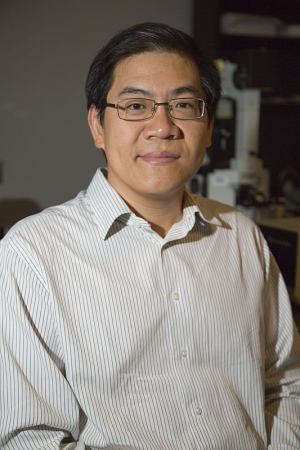Dr. Wei-Chuan Shih, a professor of Electrical and Computer Engineering at the University of Houston's Cullen College of Engineering, has been promoted to a Fellow by SPIE for his contributions in novel imaging methods, spectroscopic techniques and plasmonic nanostructures with various applications in chemical and biosensing.
Founded in 1955, SPIE is the largest international professional society for optics and photonics and a leader in the fields of optics and photonics when it comes to conferences and education programs. Shih currently serves as an associate editor for SPIE's Journal of Nanophotonics and as a member of several conference program committees. He has frequently given presentations at SPIE conferences since he was a doctoral student at MIT.
Shih said he was notified of the promotion on Christmas Eve.
“It was definitely an extraordinary Christmas present! I feel very humbled to be elevated to the Fellow status, which belongs to a highly selected group of individuals who have made significant contributions in the field of optics and photonics,” he said.
Shih joined the faculty at UH in 2009, following two years as a Schlumberger research fellow. He earned his B.S. and M.S. from National Taiwan University and National Chiao Tung University in 1997 and 1999, respectively. His Ph.D. work was conducted at the MIT Spectroscopy Laboratory/NIH Laser Biomedical Research Center under late laser physicist Dr. Michael S. Feld.
Shih leads the NanoBioPhotonics Group at UH, which focuses on nanomaterial, microdevice and macrosystem advances in the fields of Biomedicine, Energy and the Environment. For example, his group’s recent paper in Nature Communications describes a novel PANORAMA technique that can be applied to imaging transparent biological nanoparticles, such as exosomes and viruses.
“My research focus is to develop novel optical and photonic techniques and technologies to address societal needs,” he said. “A primary area that I am interested in is overcoming biomedical challenges for the betterment of healthcare. An interesting direction my lab is pursuing is early diagnosis and monitoring of cancer and other diseases by light-based approaches. For example, we are developing ultra-sensitive and selective diagnostic techniques for cancer by targeting cell-free circulating exosomes.”
